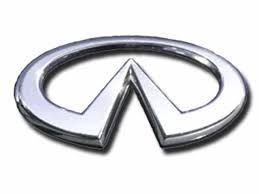QX56 V8-5.6L (VK56DE) (2004)
/Page-513001.png)
Refrigerant Oil: Service and Repair
LUBRICANT
Maintenance of Lubricant Quantity in Compressor
The lubricant in the compressor circulates through the system with the refrigerant. Add lubricant to compressor when replacing any component or after a
large refrigerant leakage has occurred. It is important to maintain the specified amount.
If lubricant quantity is not maintained properly, the following malfunctions may result:
-
Lack of lubricant: May lead to a seized compressor
-
Excessive lubricant: Inadequate cooling (thermal exchange interference)
LUBRICANT
Name: NISSAN A/C System Lubricant Type S (DH-PS)
Part number: KLH00-PAGS0
CHECKING AND ADJUSTING
CAUTION: If excessive lubricant leakage is noted, do not perform the lubricant return operation.
Start the engine and set the following conditions:
test condition
-
Engine speed: Idling to 1,200 rpm
-
A/C switch: On
-
Blower speed: Max. position
-
Temp. control: Optional [Set so that intake air temperature is 25 to 30 °C (77 to 86 °F).]
-
Intake position: Recirculation (X)
-
Perform lubricant return operation for about ten minutes
Adjust the lubricant quantity according to the following table.
Lubricant Adjusting Procedure for Components Replacement Except Compressor
After replacing any of the following major components, add the correct amount of lubricant to the system.
Lubricant Adjustment Procedure for Compressor Replacement
1. Before connecting recovery/recycling equipment to vehicle, check recovery/recycling equipment gauges. No refrigerant pressure should be
displayed. If NG, recover refrigerant from equipment lines.
2. Connect recovery/recycling equipment to vehicle. Confirm refrigerant purity in supply tank using recovery/ recycling equipment and refrigerant
identifier. If NG, refer to "Contaminated Refrigerant".
3. Confirm refrigerant purity in vehicle A/C system using recovery/recycling equipment and refrigerant identifier. If NG, refer to "Contaminated
Refrigerant".
4. Discharge refrigerant into the refrigerant recovery/recycling equipment. Measure lubricant discharged into the recovery/recycling equipment.
5. Drain the lubricant from the "old" (removed) compressor into a graduated container and recover the amount of lubricant drained.
6. Drain the lubricant from the "new" compressor into a separate, clean container.
7. Measure an amount of new lubricant installed equal to amount drained from "old" compressor. Add this lubricant to "new" compressor through the
suction port opening.
